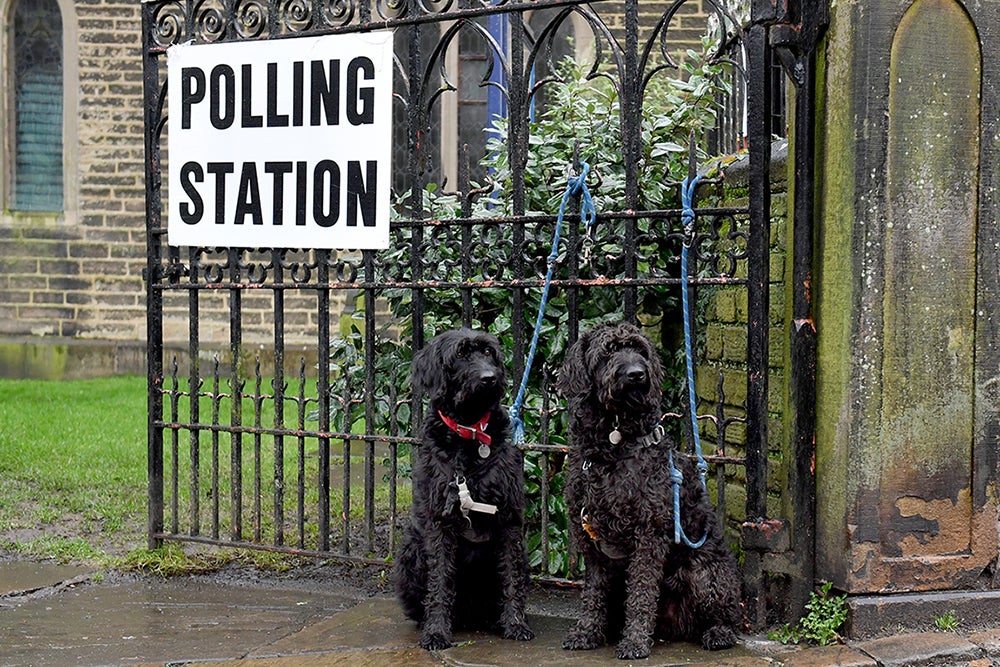
The constituency boundaries on which the next general election will be fought have been redrawn. The changes, designed by independent boundary commissions to reflect population developments, came into effect in July. This will mean a reduction in the number of MPs in Wales and Scotland, and an increase in England – particularly in the south-east.
The old boundaries were based on data from 2005 – a review has been long overdue. Attempts at reform were made in 2013, under the Conservative-Lib Dem coalition, and in 2018, under Theresa May’s government. Both were abandoned. But the latest review, having gained royal assent, cannot be retracted. That immediately set off a race to calculate how these new seats would have voted at the last election and, today, I can provide the “notional” figures for England and Wales, right down to ward level.
In 2019, the Conservatives won 359 seats across England and Wales and Labour won 201. Had the election been fought on the new boundaries, the Conservatives would likely have won 365 (up six), while Labour would have won 199 (down two).
The Liberal Democrats would have won seven seats (unchanged), while the Welsh nationalists Plaid Cymru would have won just two (down two).
The previous boundaries were drawn to give disproportionate weight to Wales and Scotland. But since the creation of the Scottish and Welsh parliaments, it has been argued this is no longer justified.
The new boundaries are primarily made up of wards, electoral divisions represented by councillors on local authorities. Think of them as unwieldy building blocks, averaging eight thousand electors each, with some as large as 18,000 or even 36,000. These are used by the relevant boundary commissions to piece together occasionally representative, often equally sized, parliamentary seats comprised of 70,000-80,000 electors. This seems entirely logical. But in practice, as you might be able to discern from my writing, it can sometimes lead to poorly drawn constituencies that sticks disparate communities together under one, rather confused-looking member of parliament.
The approach I used to model how the new boundaries would have voted at the last election stemmed from the following question: where in a constituency did X party get its vote from? Not: how did this ward vote? To do this I used a demographic and local election regression model to, first, calculate a ward electorate’s engagement relative to others, and where a party is most likely to find votes in a high-turnout election. The end result is that, though Mrs Muggins may win her ward of Trumpington West for Liberal Party at every low-turnout council election, that same locale would inevitably turn out for either the Conservative or Liberal Democrat candidate at a general election.
The map below gives us a modelled estimate as to how each ward voted at the 2019 election, the year of Labour’s rout and the Tories’ biggest majority since 1987.
Wards give us a more granular interpretation of how the nation voted. In my locale of Chester, north-west England, we can see that while Labour built up votes in the urban wards, it fell well short in the villages. In Heywood and Middleton, the Tories only led Labour in a few neighbourhoods, but when they did the lead was decisive. In the wards Labour led in, however, they were small and insignificant compared with the end result.
In Barnsley and Hartlepool, we can work out where the Brexit Party did best (listed as “Oth” on the map above); and in South Cambridgeshire, we can observe that the Lib Dems did best on the outskirts of Cambridge, not throughout.
But the most arresting observation should be the scale of Conservative dominance, in countryside and township England in a way that illustrates again the electoral mountain that Labour must climb to win the next election. The party may eke out leads in actual Bolton or in most of actual Leigh, but it’s the outskirts – the suburbs – that swung the last election, and will no doubt swing the next.